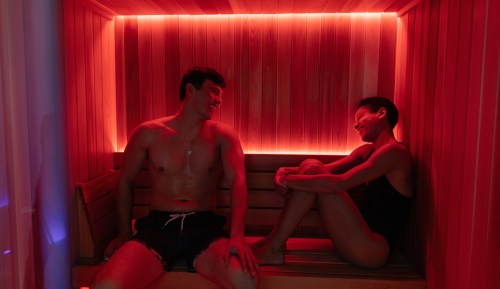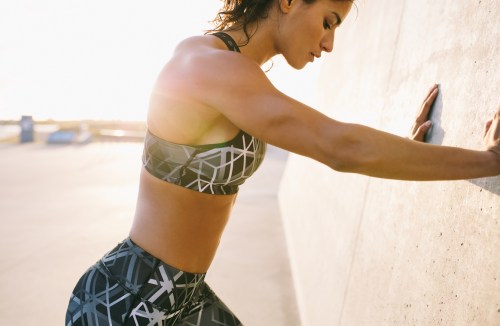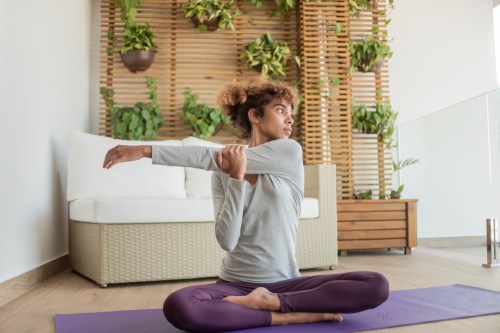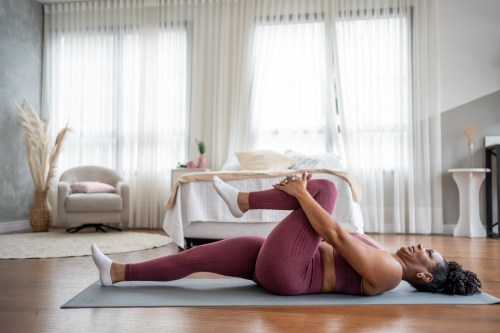5 Chest Stretches That Will Make Your Posture-Induced Aches and Pains a Thing of the Past
Dealing with WFH-induced aches and pains? These five chest stretches will help undo the damage of slumping over a desk all day.
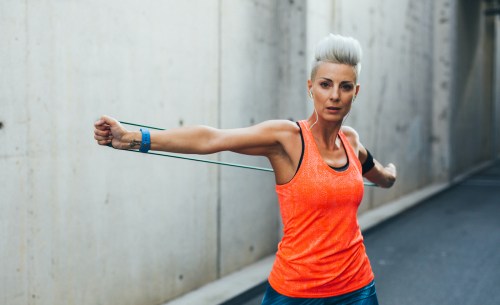
If you’ve heard it once, you’ve heard it a million times: Stretching plays a critical role in any fitness routine. And while most of us know how important it is to give our legs a lot of post-workout love (because, ya know, that second-day soreness can making walking really uncomfortable), there’s often one under-stretched body part that could use some TLC, too: your chest. Chest stretches are important for not only keeping your muscles loose, but also for undoing the damage that not-so-perfect posture can bring about, so consider this your reminder to make them a regular part of your routine.
Experts in This Article
ISSA certified personal trainer and COO of Model Trainers
doctor of physical therapy
Stretching, in general, helps you maintain flexibility and strength throughout your body. “Our bodies need to meet a certain threshold of flexibility to support an adequate range of motion in the joints, and without regular stretching, muscles have a tendency to shorten and become tight,” says Sean Alexander, co-founder, and CEO of CEO Model Trainers.
Whether you’re targeting your upper body in a given workout or not, chest stretches are a must-do because they help to loosen up postural issues that come from sitting at a desk all day. “When the chest and shoulder muscles become tight from sitting or standing for long periods of time with poor posture or from an intense workout session, these muscles will relax in a ‘shortened’ position, meaning the shoulders will round forward into a slouching or slumped position,” says Topel.
To help keep your chest limber, Topel and New York-based physical therapist Shawn Kato, share their favorite chest stretches, below. And one more pro tip: When you’re just starting out with a chest stretching routine, Topel suggests skipping out on any weighted move, since your risk of injury dramatically increases when you attempt to stretch a muscle that is utilizing weighted tension. The good news? These five weight-free moves offer A-plus relief to chest stretchers of any level.
5 chest stretches that will combat the effects of poor posture
1. Doorway pectoral stretch
Open the door to your new, chest-stretcher way of life with this easy move. Stand tall inside a door frame with your back straight and core engaged, then bring your arms up and out to the side to create a 90-degree angle with your elbows. Plant your forearms flat against the sides of the door frame, and lean your torso forward until you feel a deep stretch across your chest and shoulders. “Don’t forget to breathe and relax into the stretch,” says Kato. Hold the position for 30 seconds, a few times every day.
2. Myofascial release with a tennis ball
To add a little pressure into your chest stretches—which helps with myofascial release—all you need is a tennis ball. Place the ball between your chest and the wall, and lean into it gently. Roll your muscles over it slowly, “searching for the spot that needs to relax the most,” says Kato. “You’ll know when you find it.” Once you’ve hit that trigger point, relax into it, and cycle through 10 to 15 breaths in through your nose with deep exhales out through the mouth, relaxing more with each breath. If you have more than one sore spot, move the ball around to find other trigger points, and repeat the process all over.
3. Floor or wall angels
Consider this the grown-up version of the snow angels you used to do as a kid. Lie on your back with your arms out to your sides, your elbows at a 90-degree angle, and your palms facing up. Be sure to keep your elbows and back glued to the floor (especially your lower back, which will want to lift), and slowly pivot your forearms over your elbows until your palms face the floor. Extend as far as your body allows, hold each rep for five seconds, then slowly return to the starting point. Repeat for three sets of 10 reps.
4. Hands behind the back
This move is a great choice when your chest needs a little pick-me-up after you’ve been hunched over your laptop for the better part of the day. Standing tall with your feet shoulder-width apart, interlock your fingers behind your back and straighten your arms as you pull your shoulder blades together and puff out your chest. Keeping your shoulder blades pinched and your chest up, lift your arms behind your back as high up as you can. Hold each rep for between 10 and 15 seconds, and repeat five times.
5. Camel pose
Borrow this yoga stretch for the sake of opening up your chest on a regular basis. Kneel on the floor with knees hip-width apart and your hands on your waist, and tuck your toes or place them flat against the floor. Slowly reach back and place one hand on each heel. Keep your chest lifted and shoulders back as you engage your core, and slowly push your hips forward. Hold the pose for 15 to 20 seconds and repeat three times.
Oh hi! You look like someone who loves free workouts, discounts for cult-fave wellness brands, and exclusive Well+Good content. Sign up for Well+, our online community of wellness insiders, and unlock your rewards instantly.
Sign Up for Our Daily Newsletter
Get all the latest in wellness, trends, food, fitness, beauty, and more delivered right to your inbox.
Got it, you've been added to our email list.
